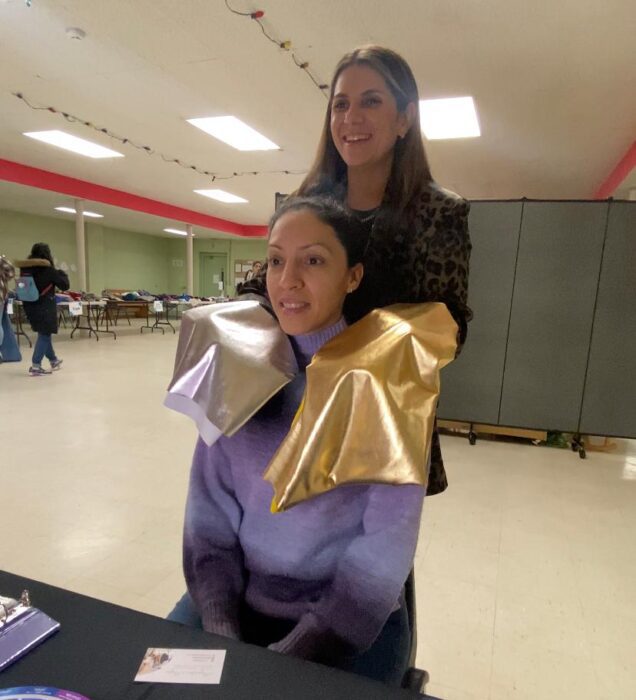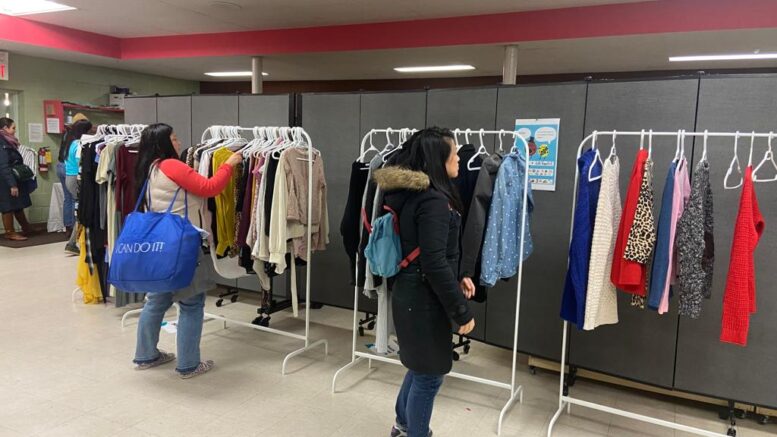Clothing swaps have become a more affordable alternative for Torontonians to find second-hand clothes, by attending events such as the one organized by @TheSwapaHolics.
Thrift stores like Value Village have faced backlash due to their recent price increases amid rising inflation. Swaps offer a lower-cost alternative, according to the founders of Swapaholics, a seasonal clothing swap event.
“I love the idea of revamping my wardrobe every few months,” said co-founder Critsmary Albitos. “So, I don’t have to purchase a new item, I just swap!”
Albitos and her Swapaholics partner, Andrea Gallo, are preparing for their third swap event, which will take place May 7 in an outdoor space on Queen Street East near Coxwell Avenue.
Albitos started her journey with clothing swap seven years ago by attending different swap events around the city.
A clothing-swap event involves bringing clothes in good condition that you no longer wear and exchanging them for new pieces brought by others. For example, if you bring 10 pieces, you can take 10 pieces to home with you.
“It has been four years that I haven’t bought any new clothes, except for underwear and shoes,” Albitos said.
The practice of swapping is not new; exchanging clothes with a sibling, cousins or friend is something that many people experience throughout childhood, and for thousands of years, humans have traded things without money being involved in the process.
A clothes swap is a low to no-cost way to refresh your wardrobe; you are bringing clothes that don’t bring you joy anymore and leaving with another pre-loved clothing piece. That being said, there can sometimes be an entrance fee for these events.
On average, entrance fees range from $5 and $20, which covers the logistics that it takes to host the event, including renting a party room or a church space, providing beverages like water and coffee as well as the transportation and the purchase of garment racks, hangers and tables.
A ‘mind-blowing’ introduction
Sometimes, the main motive of clothes swap events is to collect money for a charity, and in this case, there could be a higher fee or organizers might request a donation.
“It was mind-blowing when Critsmary introduced me to clothing swaps,” said Gallo, a Toronto actress. “In the acting industry, sometimes for a specific role or audition, I would need a clothing piece that I know I won’t wear a lot, so I would visit thrift stores. But now, I swap.”
Critsmary and Gallo hosted their first Swapaholics event in Toronto in November 2022. The feedback from the attendees was so positive, they hosted another event on January 21, with more than 40 attendees.
The Jan. 21 event featured special guest Alejandra Mejia from @blissfulystyled, an image consultant who helped attendees decide which colours suit them best based on their skin tones.

Eco-friendly, but are there health risks?
The culture of clothing swaps originated in 1995 in San Francisco, with events hosted by Suzanne Agasi of ClothingSwap.com, who started swapping in her apartment with just a few friends.
Later, these gatherings turned into large events across the country, with spa treatments and refreshments included. The largest one had 300 attendees.
It has been estimated that 92 million tonnes of clothing are disposed in landfills every year, according to Martina Eginie. This is the equivalent of a garbage truck full of clothes ending up in the landfill every second. Clothing swaps also reduce carbon footprints and chemical pollution caused by the apparel industry.
But, while one way to reduce this number is to consume less or buy second-hand, new attendees to clothing swaps might be concerned about hygiene and the risk of bed bugs.
“When you go to a restaurant, those dishes aren’t new, you place a certain amount of trust that they wash them well,” said Sonia Carlson, an attendee at the Jan. 21 event. “Sometimes they do, sometimes they don’t … “
Carlson said she has attended 12 swaps around the city and has never had an issue with cleanliness or bed bugs.
Swaps are a win-win, attendee says
“With the clothing swap, most people that go to them are very conscious, most of us will watch them and make sure that the clothes are clean and decent because we want to swap and receive something good too.”
The clothes that are left from the Swapaholics’ events are donated to centres like Scott Mission and community centres like Gibson Centre in Markham that help new immigrants.
“I think everyone should go to a clothing swap, it is a great way to spend an afternoon, time really flies and you feel you are doing something good,” said Ail, one of the attendees of the event. “It is a win-win because you get rid of some things that you know are taking up space in your wardrobe, and you can leave with things that you really love and appreciate.”
The next clothing swap event by @theswapaholics will be May 7 from 11 a.m. to 2 p.m. at 1594 Queen St E. with a $5 dollar entrance fee. Each attendee can swap for the equal amount of items they bring that are accepted.
A fashion consultant will be offering short consultation on the site to all the attendees.

